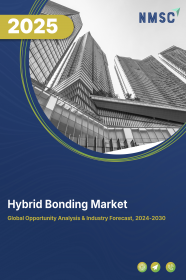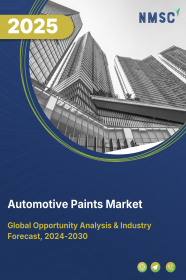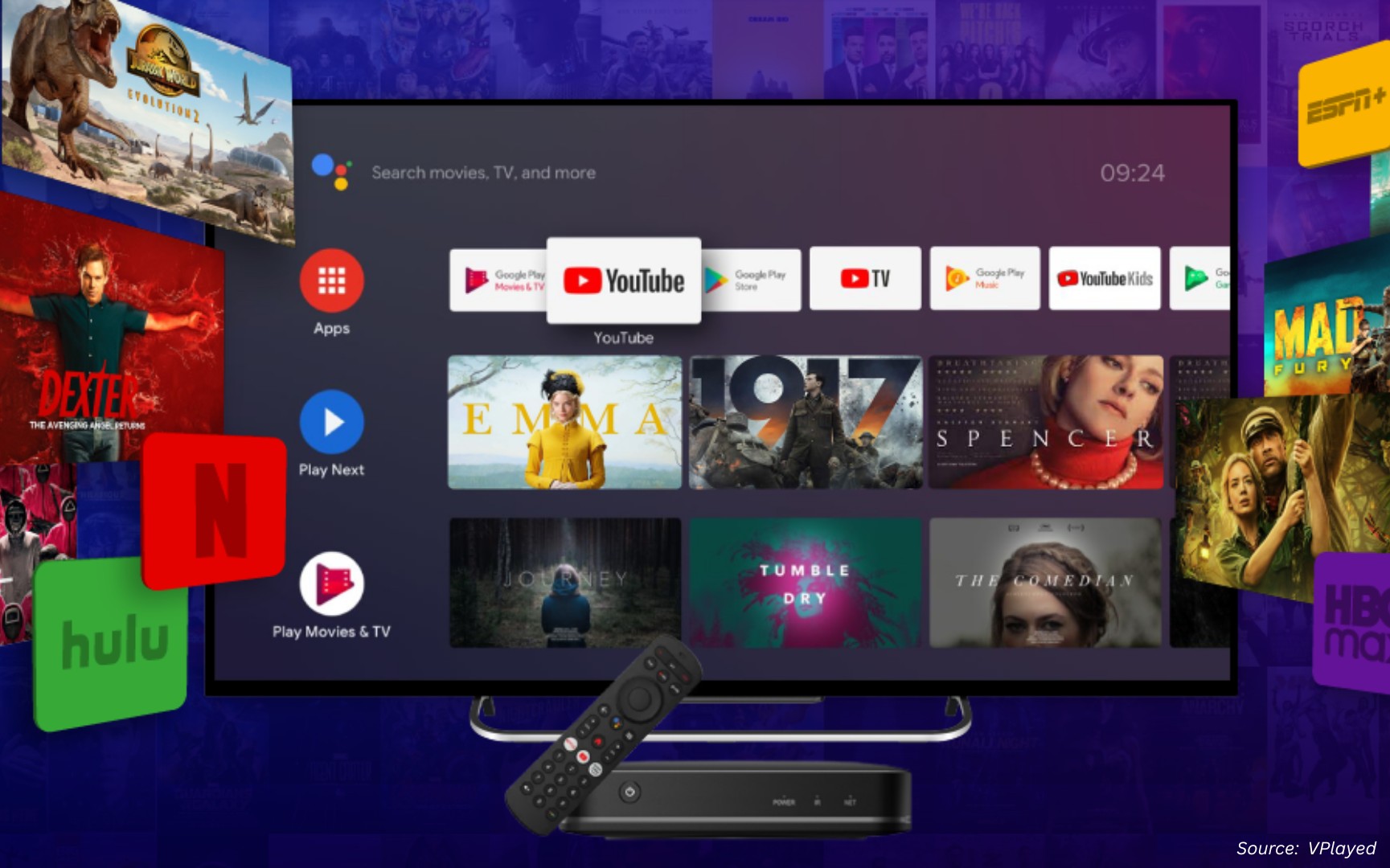
Hybrid Bonding Market by Type (Chip to Chip, Chip to Wafer, and Wafer to Wafer), by Application (Yield Monitoring, Soil Monitoring, Scouting, and Others), and by End-User (Consumer Electronics, Automotive, Aerospace, Healthcare, and Others)- Global Opportunity Analysis and Industry Forecast 2024-2030
Hybrid Bonding Market Overview
The global Hybrid Bonding Market size was valued at USD XX billion in 2023 and is predicted to reach USD XX billion by 2030 with a CAGR of XX% from 2022-2030.
The hybrid bonding market involves the use of advanced bonding techniques in electronics manufacturing to create reliable connections between tiny components. This market is growing due to the benefits that it offers, such as improved electrical performance, the ability to produce smaller devices, and greater durability. Advanced bonding is essential for developing high-performance electronic products like smartphones and computers. It combines various bonding methods to meet the needs of modern electronics, ensuring that devices are both compact and dependable.
Market Dynamics and Trends
The increasing demand for miniaturized devices such as smartphones & medical devices with high-performance capabilities are driving the growth of the market. This demand for smaller devices creates a demand for advanced bonding technologies that can handle the miniature size of electronic components while maintaining high performance and reliability.
According to UN Trade & Development (UNCTAD) the smartphones shipment reached 1.2 billion in 2023. This surge in adoption of smartphones drives the demand for advanced bonding technologies, thereby propelling the market growth.
Moreover, the growing adoption of advanced bonding technology in packaging applications such as 3D packaging and wafer-level packaging of semiconductors to bond multiple materials with high precision & accuracy is further accelerating the growth of the market.
For instance, in June 2024, Samsung and SK Hynix announced to implement hybrid bonding technology for 3D DRAM, aiming to replace the current micro bump connections with through-silicon-via (TSV) to reduce chip thickness.
Furthermore, the growth of the automotive industry is significantly boosting the hybrid bonding market trends. As modern vehicles contain features such as autonomous driving and safety enhancements, the demand for reliable and high-performance electronic components is on rise. Advanced bonding technology meet these requirements by providing precise and durable connections between tiny components, essential for the complex electronic systems in vehicles.
According to the statistics published by the OICA, the total vehicle production of 40 countries including China, U.S., India and Japan was around 93 million in 2023 from 85 million in 2022. This surge in vehicle production drives the demand for advanced bonding, significantly boosting the market growth.
However, material limitation as advanced bonding technology requires specific types of materials and with the high cost of hybrid bonding technology than conventional bonding techniques are the major factors restraining the growth of the market.
On the contrary, the advancement in hybrid bonding technology such as advanced semiconductor packaging technology that involves direct bond interconnected process is expected to create ample opportunities for the growth of the market. Direct Bond interconnected process connects different semiconductor components that will result in improved electrical and thermal process.
Market Segmentations and Scope of the Study
The hybrid bonding market report is segmented on the basis of type, application, end-user, and region. On the basis of type, the market is classified into chip-to-chip, chip-to-wafer, and wafer-to-wafer. On the basis of application, the market is divided into yield monitoring, soil monitoring, scouting, and others. On the basis of end user, the market is segmented into consumer electronics, automotive, aerospace, healthcare, and others. Regional breakdown and analysis of each of the aforesaid segments include regions comprising of North America, Europe, Asia-Pacific, and RoW.
Geographical Analysis
Asia-Pacific dominates the hybrid bonding market share and is expected to continue its dominance during the forecast period. This is attributed to factors such as the growing consumer electronics industry in the Asia-Pacific region.
According to the report published by Shanghai Municipal People’s Government, consumer electronics sales reached approximately USD 305 billion in 2023 and are projected to grow to USD 320 billion in 2024. The surge in demand for advanced electronic devices drives the demand for advanced bonding technology to effectively support the production of smaller, more powerful, and reliable components, thereby fuelling the hybrid bonding market growth.
Moreover, the expanding automotive industry and the increasing adoption of hybrid bonding to provide improved performance & reliability of vehicle parts and components are further contributing to the growth of the market in countries such as China, Japan, and South Korea. According to the International Trade Administration, China is the largest vehicle manufacturing country in the world selling over 25 million vehicles were sold in 2020 and domestic production is expected to reach 35 million vehicles by 2025.
On the other hand, North America is expected to show steady growth in the hybrid bonding market demand. This is due to the developed healthcare sector and the growing usage of hybrid bonding for the development of advanced medical devices and equipment.
According to a report from the Centers for Medicare & Medicaid Services (CMS), the medical spendings in the U.S is growing in a significant rate. The health expenditure of the nation rose to around USD 4.84 trillion in 2023 from USD 4.50 trillion in 2022. The rising investment in healthcare sector drives the demand for advanced medical devices, thereby fuelling the growth of the market.
Moreover, the rapidly growing aerospace industry along with the increasing adoption of hybrid bonding technology for bonding structural components such as wings, fuselage, and landing gears, as well as for composite repair applications is further driving the growth of the market in this region.
According to report published by NASA, the government of the U.S. allocated a funds of around USD 12.8 billion to invest in its space sector for the year 2025, and enable NASA to continue exploration of earth and space. This significant investment in the aerospace industry, combined with the increasing use of advanced bonding for the development of aircraft fuels the growth of the market.
Competitive Landscape
Various key players operating in the hybrid bonding industry include Xperi Inc., Interuniversity Microelectronics Centre, Intel Corporation, CEA-Leti, Samsung Electronics, Taiwan Semiconductor Manufacturing Company Limited, Adeia Inc, United Microelectronics Corporation, EV Group, Applied Materials Inc, and others. These market players are adopting various strategies such as collaboration and product launches to remain dominant in the market.
For instance, in February 2023, Adeia Inc. announced a partnership with Qorvo, provider of connectivity and power solutions. The partnership was aimed toward licensing Adeia's hybrid bonding technology.
Moreover, in February 2023, United Microelectronics Corporation collaborated with Cadence Design Systems, Inc. collaborated on 3D-IC Hybrid Bonding Reference Flow. The collaboration to support the integration across a broad range of technology nodes that are suitable for edge AI, image processing, and wireless communication applications.
Furthermore, in July 2022, EV Group launched die-to-wafer fusion and hybrid bonding by successfully achieving 100-percent void-free bonding of different sizes from a complete 3D system-on-a-chip (SoC) using EVG's GEMIN FB automated hybrid bonding system. The launch was aimed at scaling down the cost of implementing heterogeneous integration.
Key Benefits
-
The hybrid bonding industry report provides the quantitative analysis of the current market and estimations from 2024 to 2030. This analysis assists in identifying the prevailing market opportunities to capitalize on.
-
The study comprises of a detailed analysis of the current and future hybrid bonding market trends for depicting the prevalent investment pockets in the market.
-
The information related to key drivers, restraints, and opportunities and their impact on the market is provided in the report.
-
The competitive analysis of the market players along with their market share in the market is mentioned.
-
The SWOT analysis and Porter’s Five Forces model are elaborated in the study.
-
The value chain analysis in the market study provides a clear picture of the stakeholders’ roles.
Hybrid Bonding Market Key Segments
By Type
- Chip to Chip
-
Chip to Wafer
-
Wafer to Wafer
By Application
-
Yield Monitoring
-
Soil Monitoring
-
Scouting
-
Others
By End-User
-
Consumer Electronics
-
Automotive
-
Aerospace
-
Healthcare
-
Others
By Region
-
North America
-
The U.S
-
Canada
-
Mexico
-
-
Europe
-
The U.K.
-
Germany
-
France
-
Italy
-
Spain
-
Denmark
-
Netherlands
-
Finland
-
Sweden
-
Norway
-
Russia
-
Rest of Europe
-
-
Asia-Pacific
-
China
-
Japan
-
India
-
South Korea
-
Australia
-
Indonesia
-
Singapore
-
Taiwan
-
Thailand
-
Rest of Asia-Pacific
-
-
RoW
-
Latin America
-
Middle East
-
Africa
-
REPORT SCOPE AND SEGMENTATION
|
Parameters |
Details |
|
Market Size in 2023 |
USD XYZ billion |
|
Revenue Forecast in 2030 |
USD XYZ billion |
|
Growth Rate |
CAGR of XYZ% from 2024 to 2030 |
|
Analysis Period |
2023–2030 |
|
Base Year Considered |
2023 |
|
Forecast Period |
2024–2030 |
|
Market Size Estimation |
Billion (USD) |
|
Growth Factors |
|
|
Countries Covered |
28 |
|
Companies Profiled |
10 |
|
Market Share |
Available for 10 companies |
|
Customization Scope |
Free customization (equivalent up to 80 working hours of analysts) after purchase. Addition or alteration to country, regional, and segment scope. |
|
Pricing and Purchase Options |
Avail customized purchase options to meet your exact research needs. |
Key Players
-
Xperi Inc
-
Interuniversity Microelectronics Centre
-
Intel Corporation
-
CEA-Leti
-
Samsung Electronics
-
Taiwan Semiconductor Manufacturing Company Limited
-
Adeia Inc
-
United Microelectronics Corporation
-
EV Group
-
Applied Materials Inc

















 Speak to Our Analyst
Speak to Our Analyst
























